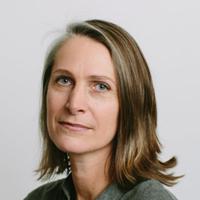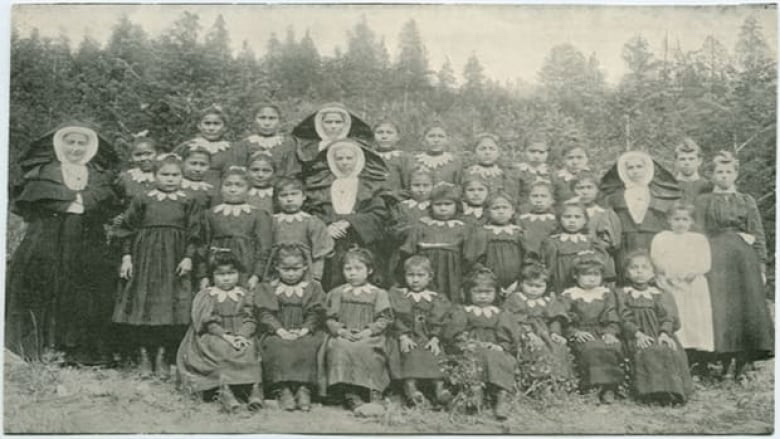[Editor’s note: This article contains disturbing information and stories about residential schools. It may be triggering to some readers.]
It was always going to be a difficult announcement.
It began today with a prayer, followed by a moment of silence and a healing song.
As he began to speak, Chief Willie Sellars of the Williams Lake First Nation, part of the Secwépemc Nation, was careful to prepare the community for the news that was coming.
Trauma-informed counsellors waited in the community, Sellars said, ready to provide support. The First Nations Health Authority was available for online help, he added. And, last week, the nation released a wellness support booklet in preparation for today’s news.
A sacred fire was planned for after the presentation, Sellars said.
It was still hard.
Sellars paused several times as he relayed stories shared by survivors during the initial phase of an investigation into the St. Joseph’s Mission Residential School, which operated a few kilometres from Williams Lake First Nation’s Sugarcane community from 1891 until 1981.
Thousands of Indigenous children — many from surrounding communities but some from as far away as Vancouver Island and northern B.C. — were forced to attend the facility during its 90 years in operation. Many never made it home.
While the National Centre for Truth and Reconciliation’s records name 16 children who died at St. Joseph’s, a preliminary investigation by the nation released today indicates those numbers are likely much higher.
The facility’s grounds and an associated ranch were searched by ground-penetrating radar, which revealed 93 likely human burials or “reflections,” 50 of which are believed to not be associated with an adjacent cemetery.
But as Sellars made clear, the loss runs much deeper.
The investigation included interviews with survivors, archival research and site investigations using LiDAR technology, which scans the ground’s surface for indentations, and ground-penetrating radar to identify features beneath the earth.
Many historical records have been destroyed, Sellars said.
But interviews with survivors offered the opportunity to “be validated and recognized in the telling of their truths.” Their stories are devastating.
“This journey has led our investigation team into the darkest recesses of human behaviour,” Sellars said. “Our team has recorded not only stories involving the murder and disappearing of children and infants. They have listened to countless stories of systematic torture, starvation, rape and sexual assault of children at St. Joseph’s mission.”
Sellars relayed stories of children beaten until they lost consciousness for speaking their Indigenous language. He said forced starvation, unclean drinking water, rampant illness, rotten food, overcrowding and fire hazards were all common at the facility.
He said survivors recalled widespread child pregnancies and babies burned in incinerators and added there’s “clear evidence” that the church, federal government and the RCMP deliberately destroyed records and covered up criminal allegations.
“I told my parents, I told the principal, I told the Indian agent, and I told the RCMP about my rape,” Sellars said, quoting a survivor. “But nobody believed me.”
In 1902, an eight-year-old boy, Duncan Sticks, one of nine children who ran away from the school, died from exposure in freezing temperatures.
Nine other children attempted suicide in 1920 by consuming poisonous water hemlock. One, Augustine Allen, succeeded in ending his own life. RCMP and the coroner’s service didn’t investigate because “the child was only an Indian,” Sellars said.
Three clergy who worked at the mission have been convicted of sexual crimes against children.
In 1989, the Vancouver Sun called the conviction of Rev. Harold McIntee “one of Canada’s first big convictions for residential-school abuse.” He pleaded guilty to sexually abusing 17 children over several decades, the first 13 at St. Joseph’s in the 1960s and 1970s. He was sentenced to two years in prison.
Former principal Bishop Hubert O’Connor was also convicted in 1996 of sexually assaulting two children at the facility in the 1960s.
In 2000, the Globe and Mail called the facility “among the most notorious residential schools in British Columbia” as it reported that Catholic oblate Glen Doughty had been charged with more than three dozen sexual offences against children at two residential schools, one of them St. Joseph’s.
In 2002, Doughty was sentenced to three years in prison after pleading guilty to 12 of the charges. He had previously been convicted of four separate counts of gross indecency against four children at St. Joseph’s.
But despite growing awareness of the horrors of residential schools, many were shocked by the May 2021 announcement when the Tk’emlúps te Secwépemc Nation discovered more than 200 burials at the site of the former Kamloops Indian Residential School.
Whitney Spearing led the Williams Lake investigation. She said the nation launched the nine-month effort following that announcement.
She added there’s still much work to be completed.
“While this additional work will provide more understanding of the St. Joseph’s mission and the 93 reflections, it must be emphasized that no geophysical investigation can provide certainty into the presence of human remains,” she said.
“Excavation is the only technique that will provide answers as to whether human remains are present within the reflections in the St. Joseph mission investigation area.”
Spearing added that approximately 14 hectares of the facility’s total 470 hectares have undergone geophysical investigation so far.
For some lost children, there will never be answers, Sellars said.
“At St. Joseph’s Mission, survivor stories tell us that many children will remain unaccounted for, even after our geophysical and archival work is complete,” he said. “Their bodies were cast into the river, left at the bottom of lakes, tossed like garbage into incinerators.
“For those children, there will be no headstone, no unmarked grave, no small fragment of bone to be forensically analyzed. For those families, there will be no closure. It is for those children and families that we grieve the most.”
*We have closed comments on this story out of respect for the families. ![]()
Read more: Indigenous, Rights + Justice
















